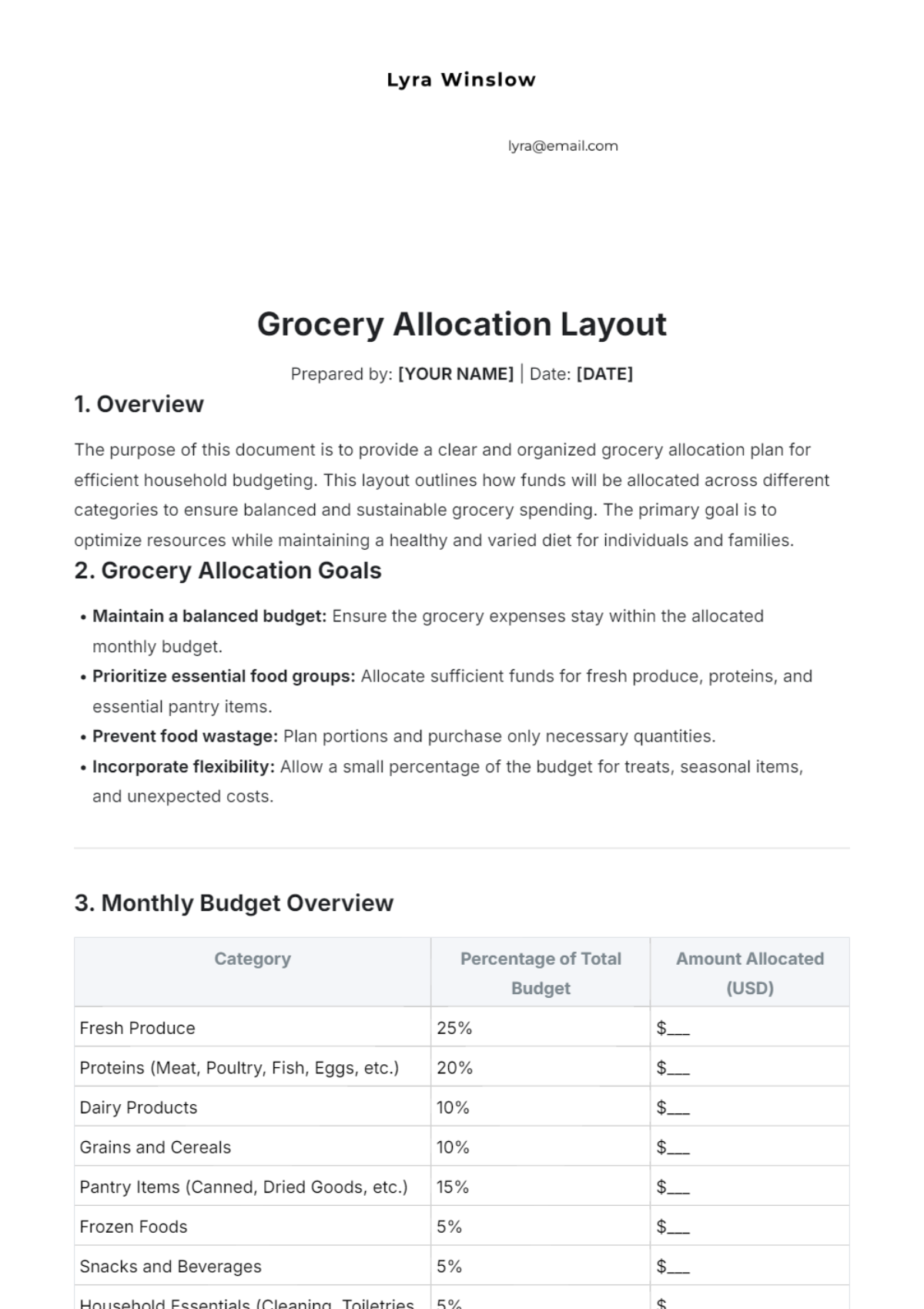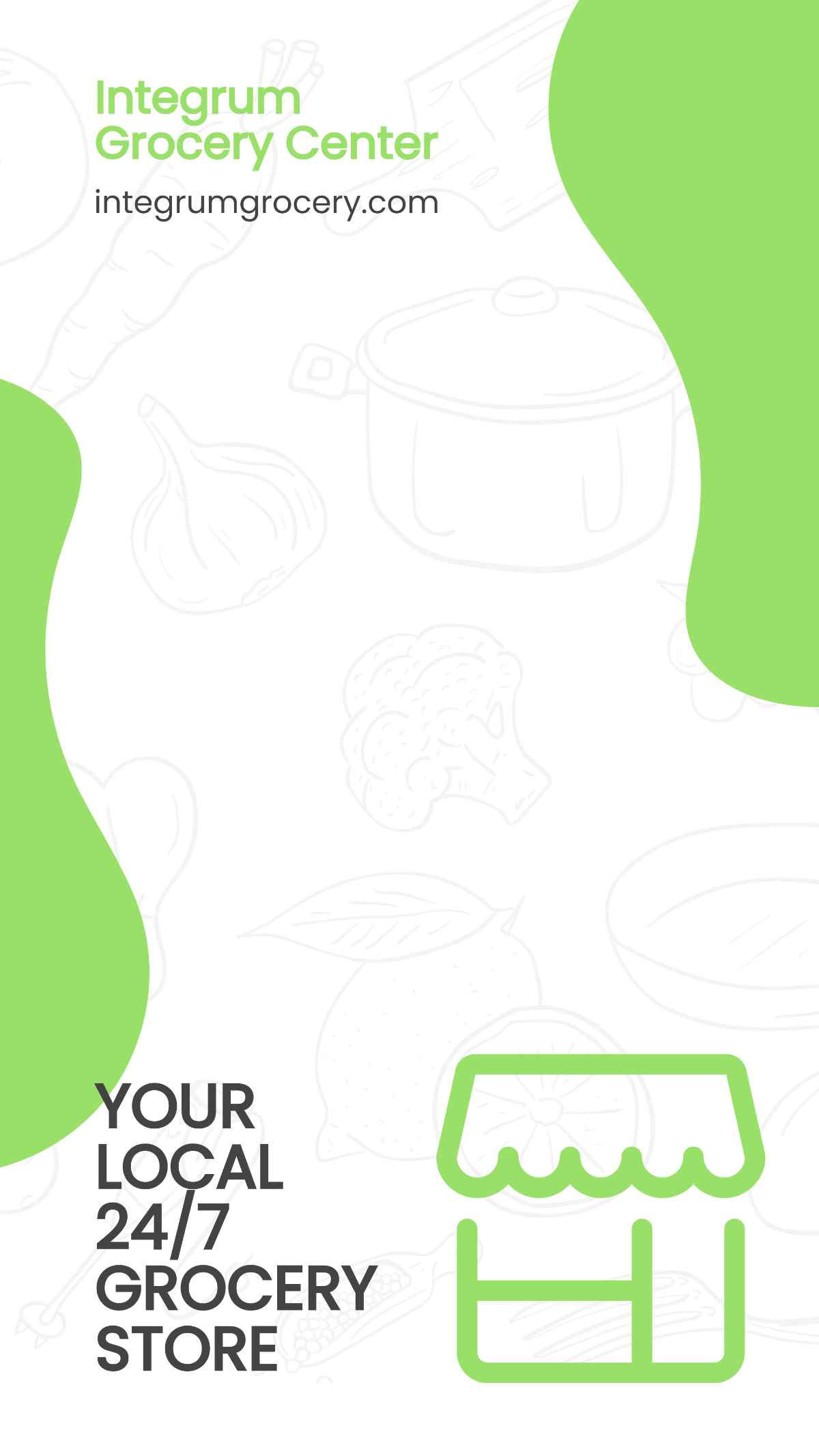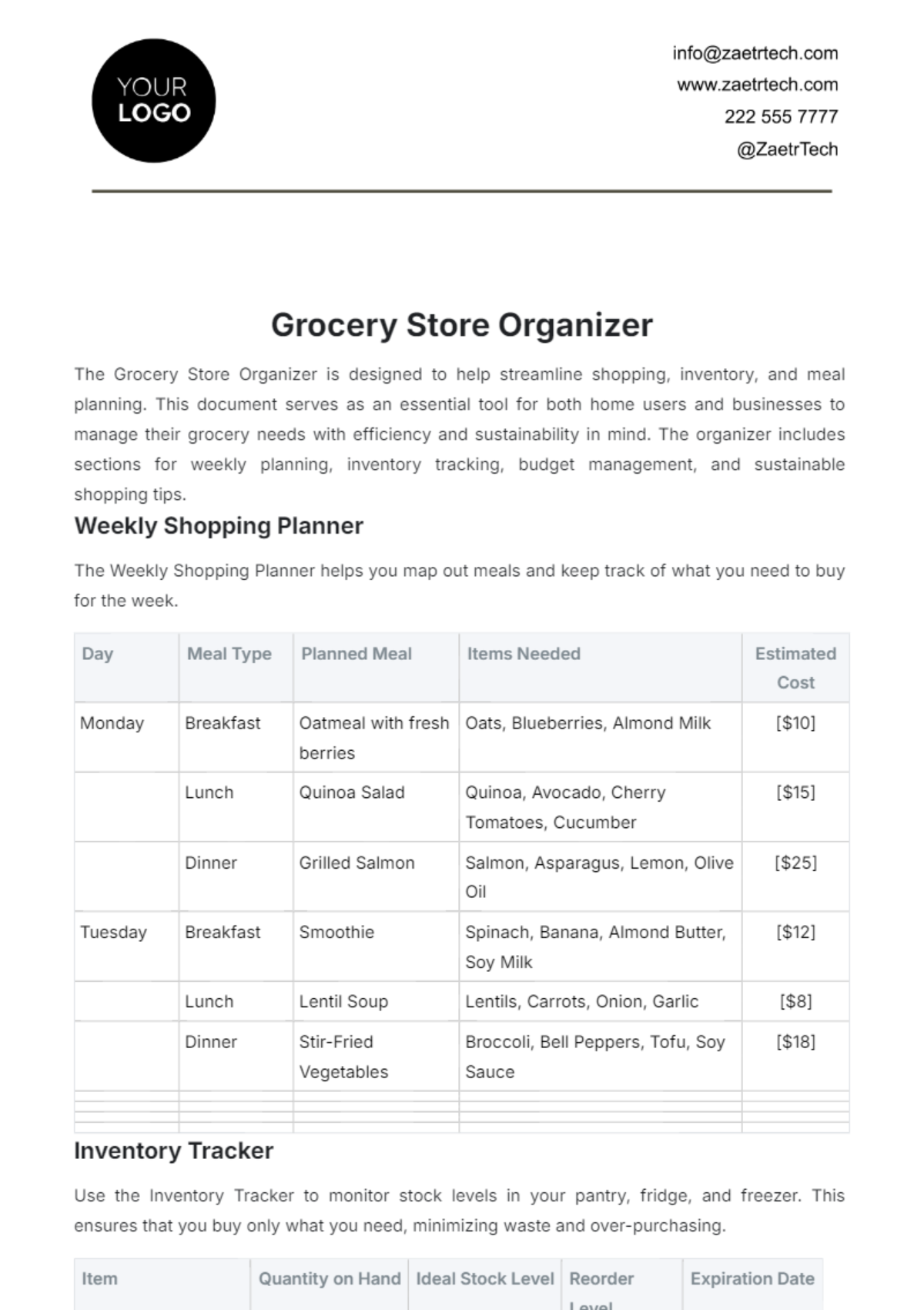Grocery Allocation Layout
Prepared by: [YOUR NAME] | Date: [DATE]
1. Overview
The purpose of this document is to provide a clear and organized grocery allocation plan for efficient household budgeting. This layout outlines how funds will be allocated across different categories to ensure balanced and sustainable grocery spending. The primary goal is to optimize resources while maintaining a healthy and varied diet for individuals and families.
2. Grocery Allocation Goals
Maintain a balanced budget: Ensure the grocery expenses stay within the allocated monthly budget.
Prioritize essential food groups: Allocate sufficient funds for fresh produce, proteins, and essential pantry items.
Prevent food wastage: Plan portions and purchase only necessary quantities.
Incorporate flexibility: Allow a small percentage of the budget for treats, seasonal items, and unexpected costs.
3. Monthly Budget Overview
Category | Percentage of Total Budget | Amount Allocated (USD) |
|---|---|---|
Fresh Produce | 25% | $___ |
Proteins (Meat, Poultry, Fish, Eggs, etc.) | 20% | $___ |
Dairy Products | 10% | $___ |
Grains and Cereals | 10% | $___ |
Pantry Items (Canned, Dried Goods, etc.) | 15% | $___ |
Frozen Foods | 5% | $___ |
Snacks and Beverages | 5% | $___ |
Household Essentials (Cleaning, Toiletries, etc.) | 5% | $___ |
Miscellaneous/Seasonal | 5% | $___ |
4. Allocation Breakdown by Category
4.1. Fresh Produce (25%)
This category includes fruits, vegetables, and herbs. Prioritize fresh, seasonal, and local produce to maximize nutrition and minimize costs. This also supports sustainability and reduces the environmental footprint.
4.2. Proteins (20%)
This allocation covers meats, poultry, seafood, and plant-based proteins like tofu and legumes. A balanced intake of various protein sources is crucial for a healthy diet.
4.3. Dairy Products (10%)
This section includes milk, cheese, yogurt, and other dairy or dairy-alternative products. Budgeting for this ensures enough calcium and protein in the diet, particularly for children and older adults.
4.4. Grains and Cereals (10%)
This category covers bread, rice, pasta, and other grains. Whole grains should be prioritized for added fiber and nutrients.
4.5. Pantry Items (15%)
Includes dry goods, spices, oils, and canned items. This section ensures the household has long-lasting essentials for a variety of meals.
4.6. Frozen Foods (5%)
Frozen fruits, vegetables, and meals fall into this category. These are convenient for longer storage periods and ensuring access to produce during off-seasons.
4.7. Snacks and Beverages (5%)
This includes light snacks, juices, soda, coffee, tea, and occasional treats. These are considered non-essential, so this portion of the budget should be kept modest.
4.8. Household Essentials (5%)
This covers non-food items like cleaning supplies, paper towels, toilet paper, and hygiene products. Keeping these under control ensures they do not eat into the food budget.
4.9. Miscellaneous/Seasonal (5%)
This portion of the budget is reserved for special occasions, seasonal items, or unplanned needs. It ensures that there is some flexibility in the budget.
5. Monitoring and Adjustments
It is essential to monitor the grocery expenses regularly to ensure the allocations are adhered to. At the end of each month, evaluate the spending in each category and make adjustments if necessary. This will help avoid overspending and allow for savings where possible.
6. Conclusion
This grocery allocation layout is designed to streamline grocery spending and ensure that resources are used wisely. By adhering to these allocations, households can maintain a nutritious and balanced diet while keeping expenses under control.
























